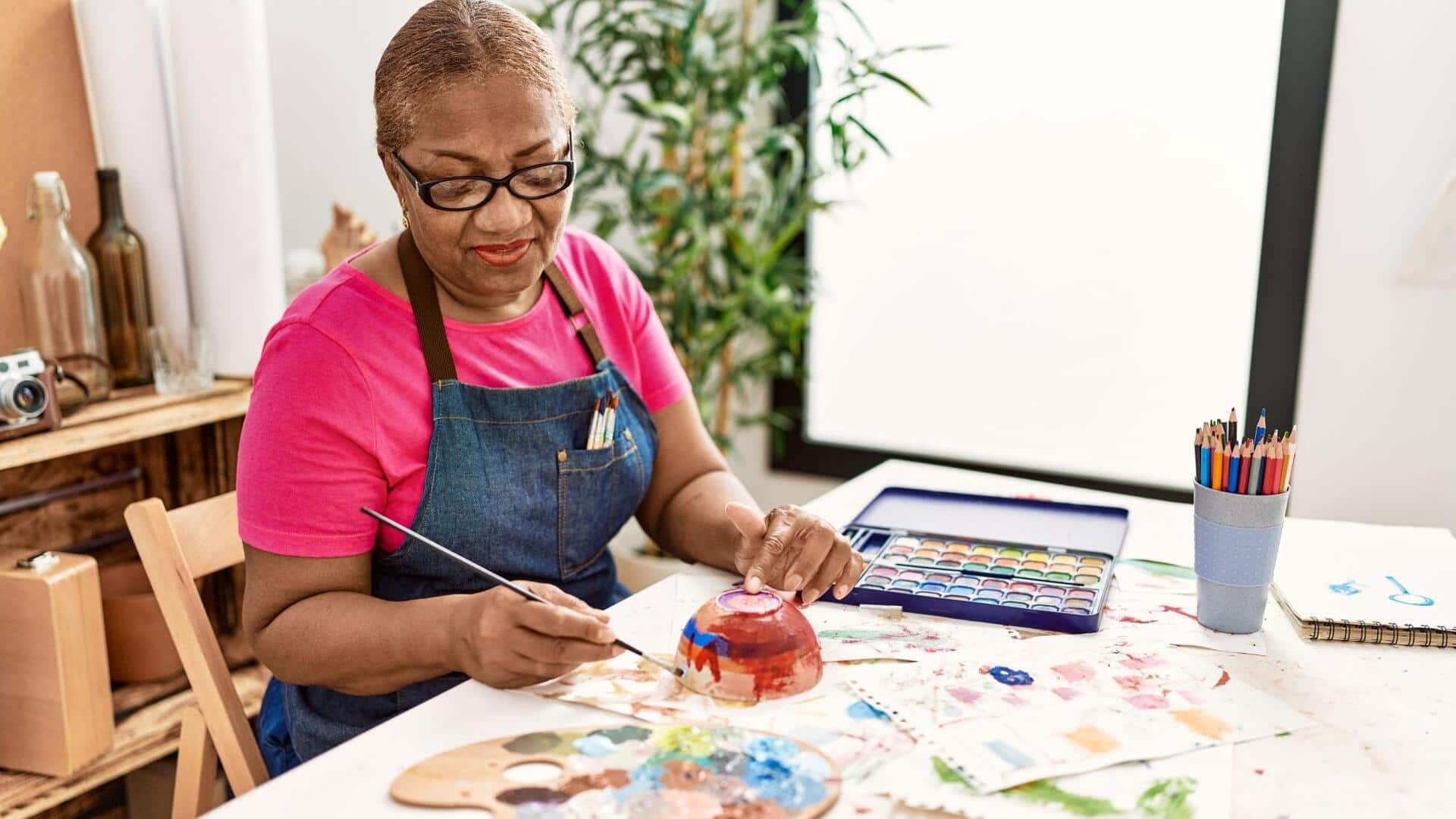
Cognitive art therapy: Concept and how to practice
What's the story
Cognitive art therapy combines creative expression with cognitive-behavioral techniques to improve mental health. This therapeutic approach allows individuals to explore their thoughts and emotions through art, while also addressing cognitive patterns that may contribute to psychological distress. By engaging in artistic activities, participants can gain insights into their inner experiences and develop coping strategies. Here are five practical ways to practice cognitive art therapy at home.
Tip 1
Create a daily art ournal
Maintaining a daily art journal can be a powerful tool for self-reflection and emotional processing. Spend some time every day drawing or painting whatever comes to your mind. This practice encourages you to explore your feelings without judgment and helps identify recurring themes or patterns in your thoughts. Over time, this can lead to greater self-awareness and understanding of one's emotional landscape.
Tip 2
Use mandalas for focus
Mandalas are circular designs that have been used for centuries as a means of meditation and focus. Creating mandalas can help calm the mind by providing a structured activity that requires concentration. This focused attention can help reduce anxiety and improve mood by promoting relaxation and mindfulness.
Tip 3
Engage in collage making
Collage making is a creative way to express complex emotions that may be hard to articulate with words. By cutting out images from magazines or other sources and arranging them into a cohesive piece, individuals can visually represent their inner thoughts and feelings. This process encourages exploration of different perspectives within oneself.
Tip 4
Experiment with different mediums
Trying out different art mediums like pastels, watercolors, or clay can open new avenues of expression in cognitive art therapy. Each medium has its own texture and feel, which can evoke different emotions or memories when used creatively. Experimenting with these various tools allows individuals to discover new ways of expressing themselves artistically.
Tip 5
Practice guided imagery through art
Guided imagery through art involves visualizing calming scenes or positive outcomes while creating corresponding artworks. This technique helps in reducing stress by shifting focus from negative thoughts towards constructive imagery. It also fosters optimism through creative visualization techniques integrated into the artistic process itself.